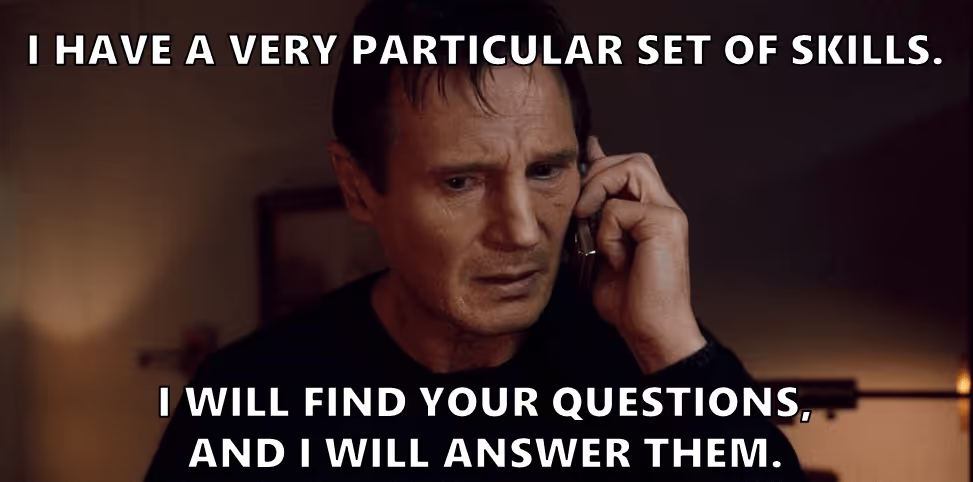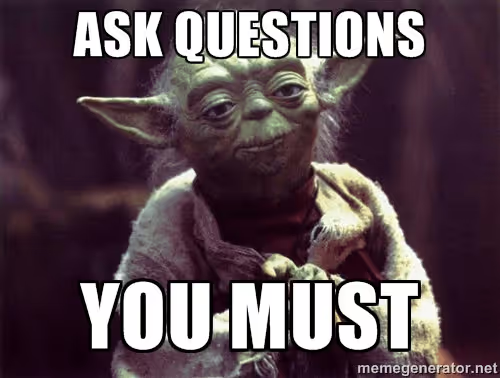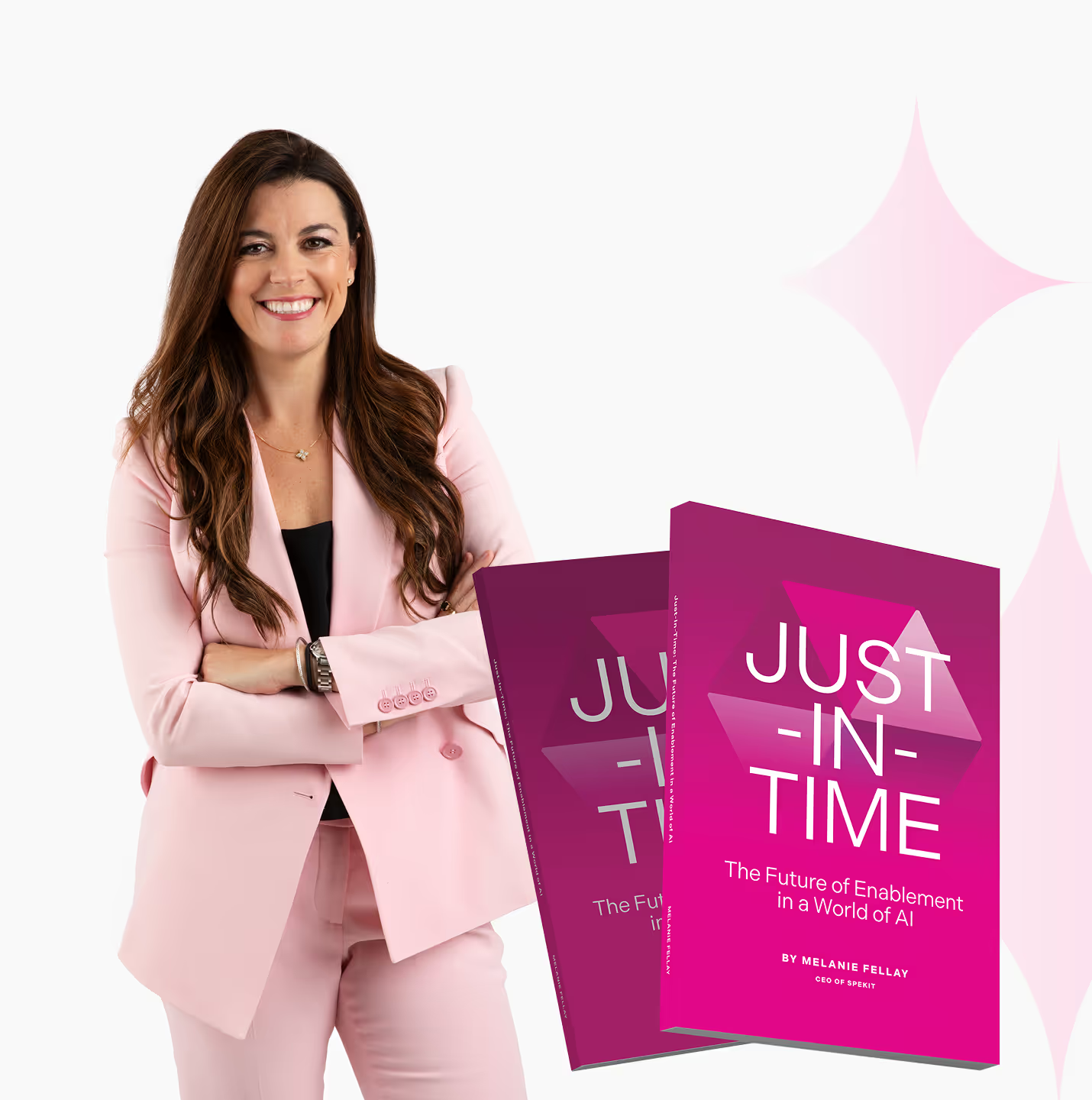Oh, objection handling. One of the most challenging areas for both seasoned and new sales reps.
In today’s economic environment, every word out of a prospect’s mouth seems to be a reason not to purchase your software or product. And, rightly so. This year has been one of the most challenging in history for sales reps trying to peddle their wares amid a financial downturn.
2023: The Year of Sales Objections
Less than a year ago, the world was all abuzz with Omicron sweeping the nation, the first James Webb Space Telescope images arriving, and bubbles popping across the globe: from crypto to housing and beyond.
Work-from-home is still alive despite the mandates, rallying cries, return-to-office parties, and deadlines. Office occupancy hovered at around 47% all fall, according to Kastle Systems, a company that tracks employee key-card entry. Even when threatened with an impending recession, employees haven’t budged on maintaining some semblance of flexible working that favors their well-being.
The impact on how reps sell SaaS solutions has been vast. An increased focus on efficiency, productivity, enabling self-sufficiency, and increasing revenue has led many organizations to cut the very lifeblood that feeds these outcomes: their tools and technology.
What does this mean for how sales professionals respond to sales objections? What are the most common sales objections in SaaS today? And, how are the the most successful reps combating them?
We went to the source, interviewing Spekit’s own VP of Sales, Christina Brady, and VP of Revenue Enablement, Laura Wheeler to find out.
Watch the Interview
Watch the full “Family Feud Style interview featuring sales experts, Christina & Laura to master Objection Handling in 2023

What is a sales objection?
A sales objection is a negative response, reaction, or hesitation expressed by a prospective customer during the sales cycle.
Objections come up for dozens of reasons, but it all boils down to this: they’re not entirely sold on why your product and why now.
60% of customers will say no four times before saying yes, so mastering the art of objection handling isn’t just a nice to have; it’s a necessity to succeed.
60% of customers will say no four times before saying yes.
The Top 5 Sales Objections
For Laura and Christina, the 5 top sales objections they hear most frequently are:
- It’s too expensive / I don’t have the budget
- It’s not the right time
- I don’t have the resources
- We already use a competitor
- We’re evaluating a different type of solution instead
Objection Handling: How to Overcome Common Objections
Let’s break down each of these to learn how sales reps can respond to each objection to help a prospect through the funnel. We asked sales leaders Laura and Christina how they would combat these objections. Here’s what they said:
1) It’s too expensive / I don’t have budget
This is by far the most common sales objection across products and services. Sales professionals are constantly fighting for budget, and it’s harder than ever to secure.
Laura: We need to help them think about budget not just as money but as time as well. How much time are people spending on manual processes that could be solved with a potential tool? People need to get creative internally when problem-solving; Christina always says buyer build, and we have to help them realize why, in this case, it’s buy.
Christina: It’s bridging the gap between the problems that you have that are present, preventing you from scaling and creating revenue, and then the budget you’ve allocated. Oftentimes, those two processes happen separately.
When we think about line items for budget, we’re thinking very, very hard on, hey, what tools do we need? And you’re not sitting and saying, forget the tools.
- What are the problems we have to solve?
- How do we get prescriptive?
If you’re a company like Spekit, defining a category, you shouldn’t expect a budget to exist for your tool. You’re not going to be an incumbent budget line. I wouldn’t expect customers we’re calling to have the budget for Spekit or even what Spekit does because they didn’t realize a solution like ours existed.
That’s where it’s leaning into the problem. You need to understand:
- If you truly don’t have the budget, then it sounds like you’re not solving this problem unless you build a solution.
- If you could build a solution to this, why haven’t you? Why does it persist?
It’s calling out some of those gaps and then saying, let’s put the budget conversation aside.
Pretend you’re not going to buy anything. You haven’t solved this problem.
Why not? What’s preventing you? And is any element of that going to cost you budget?
Well, maybe we should talk about getting a line item, right? So it’s leaning further into the conversation versus convincing them to spend their money with us. You’re not going to convince anybody that way.
.webp)
Common Budget ObjectionsExample Talk Track1. We don’t have budget for a new tool.Budget is foundational, and you weren’t expecting my call or the possibility that you could buy a tool to solve these problems. What’s the usual process for uncovering the budget to solve problems?2. We don’t have a line item for this, so we’d need to pull the budget from elsewhere.Collecting budget for an initiative like this was common amongst our customers when we first launched! I imagine that asking for budget is a process that comes with a lot of scrutiny. I wouldn’t want you to start that process unless you’re sure we’re the right solution, right now. If you find the right tool, agnostic of us, do you feel comfortable securing the budget?3. We aren’t comfortable sharing our budget.Understood, my goal is to make this as comfortable as possible. If it helps, maybe I can give you a range of what other solutions to these issues cost, and you can determine from there if it makes sense to keep talking?4. We’re on a budget freeze.It’s painful to need tools or services and have to do more with less. Many of our customers are in a similar boat. In what ways have you been able to make room for needed initiatives during past budget locks?5. We only have a thousand dollars budgeted for this (or some other low amount)I love that! What kind of research have you done thus far to give you insight needed to solve these issues, and how did that research play into the budget decision?
How has the process of securing budget shifted in the last year and what impact does this have on objection handling?
Laura: I honestly think the budget holder has moved up in organizations. As a Rev Ops leader or a sales enablement professional in the past, we could have the authority to purchase tools based on the problems that we were trying to solve.
Now, most of those decisions are being made at the C-level or Finance CFO, and every single person within the organization, horizontally and vertically, has to sign off on this. Too often, teams stop when a prospect says they potentially have budget.
Who is the signer, and how can you unlock their budgets? How do you shift funds over?
As the seller, you might not be a part of these conversations. So you have to become really good at building champions.
Access Now: Designing Your Sales Playbook [With Template]
2. It’s not the right time
Laura: Obviously, you WANT to create urgency, but I don’t know if we can actually CREATE it as sellers. We can uncover urgency and help influence, but we cannot create the timeline for them as much as we want to.
Obviously you WANT to create urgency but I don’t know if we can actually CREATE it as sellers. We can uncover urgency and help influence, but we cannot create the timeline for them, as much as we want to.
It’s really just making sure that we fully understand what they’re trying to do. We can try to influence and make it a bigger problem, maybe uncover, multi-thread, and get more people into the picture who might also be feeling this.
Christina: I agree. I think a lot of money is spent on sales methodology with the wording of create urgency—and Laura’s right.
It’s uncovering the urgency, and then you can point the urgency in a different direction, right?
Sometimes, you don’t understand how bad a problem is or how it will impact you until you hear about it.
So, let’s talk about what your timeline is and why it’s important. And, sometimes, talking about the cost of doing nothing can make them reframe their timeline. So, in that way, you can influence urgency.
Laura: Christina and I like to talk about disqualifying early. Because, like we said, you can’t create that timeline. You can amplify it. You can influence it. But we also have to, as a seller, go find the buyers who do have intent and are willing to buy now.
It’s an art. This is where the art of sales comes in.

Common Sales ObjectionsExample Talk Track1. I don’t have enough time or resourcesThat makes sense! If you did, you wouldn’t need a tool like us. Think of our product as the medicine for lack of resources. Are you open to hearing more how?2. We’re focusing on the rollout of [other application / process], which takes precedence/We have too much going on right now.How are you ensuring that all the changes you’re making are properly communicated and digested by current and future employees? What work will you have to do to ensure it’s communicated, and who owns that?3. I still can’t find the time or resourcesWhat’s currently taking up most of your time?
If you could eliminate anything from your workload, what would it be?
How long have you been underwater, and if we never spoke today, how would you solve this?
3. I don’t have the resources
Laura: As the owner of a tech stack, I feel this a lot. There is a hidden time of building, connecting, processing, and permissioning. I think it goes back to ensuring you have identified the problem and what will persist if you do not change.
So try digging in. They don’t have the resources? Ok, tell me a little bit more about where you’re spending your time or where your resources are allocated.
Then you can go in and say, “Hey I see you’re spending all this time in this area, it would probably better behoove you to take those resources and reallocate them over here because that’s where you’re going to see ROI.”
But too often, buyers have this tunnel vision of it’s just gonna be a lot of upkeep, it’s gonna be a lot to manage and set up, or I don’t have the resources to man or woman that.
Christina: Sometimes people are so content running a race with a rock in their shoe because they don’t have the time to stop and take the rock out, right?
Even though if you stop and take the rock out, you will objectively run faster and pass where you would have been.
There is this idea of inertia, even when pain exists, which is that I don’t have the time or resources to make this easier on myself because the process of making it easier for me feels like I’m stopping, and I don’t have the flexibility to stop.
Then, you take economic factors and market factors right into that. The idea of, I’ll leave the rock in my shoe because I can deal with it, because then at least I don’t stop moving.
That’s a challenging paradigm shift for people to make.
And oftentimes, when we’re talking to champion level or user level at any organization, and you’re selling your product, they don’t always feel like they have autonomy over their own time, right? They don’t feel they can stop and take the rock out of the shoe.
That’s a lot of emotional walls you must find a way to get through, which takes time, energy, and acumen.
That’s a lot of emotional walls you have to find a way to get through and that takes time, energy, and acumen.
This is a great opportunity to say, hey it sounds like you have a rock in your shoe. Let’s figure out what to do with that.
Do you want the rock in your shoe, by the way? You don’t. Okay. Okay.
Let’s talk about how folks like you have gotten the rock out of their shoe.
And let’s talk about folks like you, what pressures they were going through, and the fear that they had going to their leadership, and how they actually built a business case to show that this is gonna help us be faster and more efficient.
A good third-party endorsement here is so key, right?
I’m not going to convince you. I’m gonna get on the same side of the table right next to you and be like, well, you know who else just did this? They look a heck of a lot like you, and let’s talk about their journey.
Suddenly they’re looking at somebody else who was in pain and has overcome it and thinking, well, maybe if they can do it, I can do it too. Can you help me with that? So glad you asked.
So, it’s about building trust and aligning with their pain instead of trying to overcome it.
So it’s about building trust and aligning with their pain instead of trying to overcome the pain.
4. I already use a competitor
Just because a prospect is already using a competitor doesn’t immediately disqualify a deal. If they agreed to take the time and meet, there’s a good chance something is missing. A few questions you can ask to help uncover those gaps could be:
- Is it meeting your needs or is there anything you wish was easier?
- What’s your favorite part of their functionality?
- What do you dislike about the tool? Is there anything missing or not quite right for the problem you’re solving?
- How was implementation? Do you feel you’re getting the support you need when you have questions?
- What other tools did you explore before you purchased?
- Are there any areas that this tool doesn’t cover?
Laura: Do you continue to nurture? How do you navigate this one as a seller while considering where you spend your time?
When thinking about competitors, we need to have them demystify and see if it is an apples-to-apples comparison because there are hardly any tools out there that are exactly the same.
There are pros and cons to each one of them. Now, if this person is friendly, you could take this as an opportunity to learn more about that competitor. Why did you buy that tool? Are they solving your challenges? How’s that going for you?
Then, maybe six months down the line you circle back and stay in touch.
I have a vendor that’s been doing that with me for about two years. They always check in with grace and ask how things are going and I appreciate that.
But, this also comes down to prioritization and whether you’re actively working or nurturing accounts in your book of business because if we think about the other objections on here like:
- It’s too expensive
- I don’t have budget
- We’re evaluating something different
- It’s not the right time
- I don’t have the resources
These are all what I call attack now objections, right?
We have the opportunity, we have the stage. Go get it!
But, when someone’s like, “Hey, we already use a competitor of yours, or we just bought a competing solution.” Your bandwidth here is better spent nurturing, building a relationship and just flicking pebbles at that competitor, right? And, how can I build that relationship with you over time so that when we’re coming up on evaluation, we’re a contender, and by the way, “Great news! Because you already use a competitor, you have a budget line item for this.”
5. We’re evaluating a different type of solution instead
Christina: Our sellers today must sell and educate, especially if you’re in a disruptive market. So, that education piece, in conjunction with the demand generation your marketing team is doing, will take some time.
Buyers are going to come in with these preconceived notions. When I have “said problem,” this is “said solution.” And so if we can get to the decision-makers, the champions, or whoever is tasked with solving this problem early enough, we can influence that buying decision.
Laura: Too often, we buy what we know. I think over the last year or so, we’ve seen a right sizing of going back and saying, okay, well, actually, what do we need?
A trend I’m seeing right now with tools is that this one tool will solve every issue for you. Some really do that the right way. They have product market fit. They understand their buyer and their pains, and they’re deploying their solution or platform to address those directly.
Every time they pull something into that platform, it’s very strategic, and it’s very, very meaningful. Right? And then, others feel these are all things just pulling from budget.
Christina: A great question to ask here is, why this problem, and why now?
You’ve got a lot of issues and you don’t solve every problem that you have. Imagine, I’ve had a drippy faucet in my house for five years and like, that’s a problem. But, the crack in a foundation is a bigger problem. The hole in the deck is another problem. The plumbing issue is costing me hundreds and my water bill every single month. Like that’s a bigger leak problem than the faucet.
So, identifying a problem is not enough. I know folks who have existed with cavities in their teeth for years because there are just other priorities that take over.
You may have identified a problem, and if you’re selling into the problem and not understanding why that problem is the one right now that’s warranting the budget, you’re going to have a lot of pipeline that converts poorly. You’re going to have a lot of champions, a lot of people who love what you do.
The place of death is, “I love your product. It’s so cool. We’re just not ready to buy it, but we love you. It’s so cool.”
You can’t identify why they aren’t buying? Well, because you didn’t talk about the more significant problems, and maybe you could solve the bigger problems, but you failed to have the conversation.
You don’t realize you’re the drippy faucet in a house falling apart, like the money pit. You’re just the drippy faucet. And so, can you talk about the rest of the problems, and can your solution solve those? That’s, that’s real multi-threading right there.
Using a framework for objection handling responses

Above all else, when objection handling, it’s essential to:
1) Acknowledge: Actively listening and acknowledging the problem lets prospects know you’ve heard them and understand their pain.
2) Respond: Restate their problem to ensure there are no misunderstandings. Outlining each pain and need demonstrates that you’re on their side and ready to continue the conversation.
3) Pivot: Lead with curiosity. Ask open-ended questions to uncover the root of their pain and determine if anyone else across their organization is also facing challenges to support multi-threading.
For more objection-handling tips, guidance, and best practices, connect with Laura and Christina on LinkedIn or browse our additional resources below.







